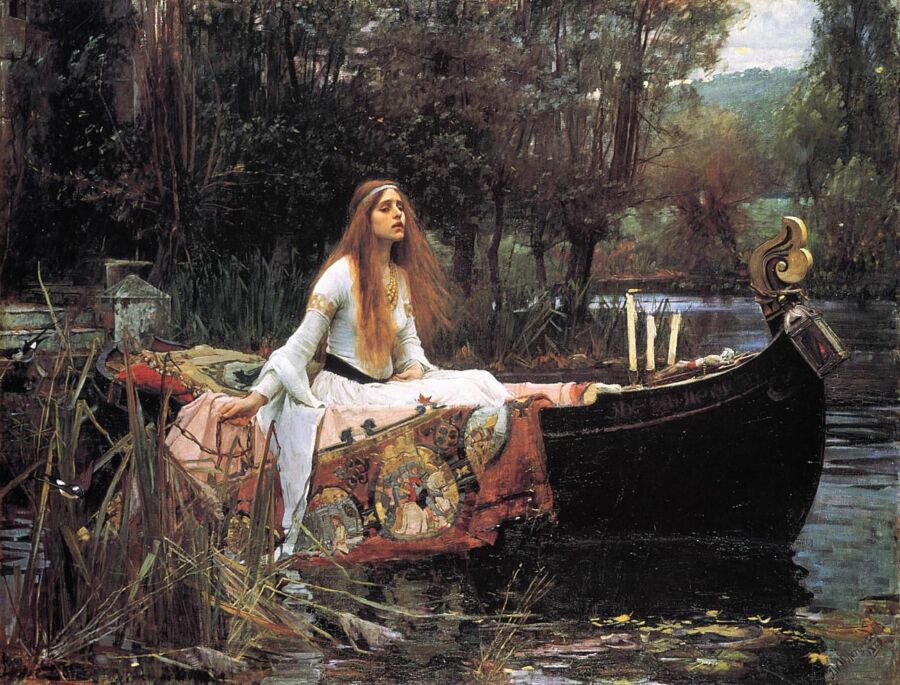
As Europe starts opening up to travelers again, it’s more exciting than ever to think about the cultural treasures that await. For me, one of the great joys of travel is having in-person encounters with great art — which I’ve collected in a book called Europe’s Top 100 Masterpieces. Here’s one of my favorites:
This woman’s haunting face makes it clear right away that — despite the sumptuous beauty of this painting — it doesn’t tell a happy tale. The Lady of Shalott knows she’s floating down a river to her doom.
The English artist John William Waterhouse depicts the dramatic climax of a legendary tale. The Lady of Shalott had spent her whole life shut up in a castle near King Arthur’s Camelot, forbidden to even look outside, upon pain of death. She could only observe the world indirectly through the reflection in her mirror. But one day, the handsome knight Lancelot rode by. She was so smitten that she broke the rules and looked directly at him. Now she’s followed his tracks and boarded a boat, releasing the mooring chain, as she sets off into the unknown to find her beloved, whatever the cost.
The riverside landscape — the reeds, the inky water, the darkening atmosphere, even birds in flight — evokes the melancholy beauty of the moment. Ms. Shalott burns brightly, her white gown and red hair radiating from the dark background. Waterhouse focused on evocative details, like the Lady’s wispy hair, pearl necklace, lightly rumpled dress, and cupped hand. For the Lady’s face, he painted his own wife. The colors — reds, greens, and blues — are bright, clear, and luminous, glowing like stained-glass windows.
The whole scene looks medieval, yet it was painted during an Industrial Age when Britain was leading the world in new technologies like electricity and trains. While Victorian Britain sped forward, its artists looked to the past. Waterhouse was inspired by a group of British artists called the “Pre-Raphaelite Brotherhood,” who reveled in painting medieval damsels and legendary lovers with heartbreaking beauty.
The Pre-Raphaelites hated overacting. So — even in the face of great tragedy, high passions, and moral dilemmas — this Lady barely raises an eyebrow. But her surroundings speak volumes. Night is falling, foreshadowing her dark destiny. The first leaf of autumn has fallen, landing near her thigh. She brings the bright tapestry she wove in captivity, with scenes of the comforting world of illusion she once knew. Now she’s guided only by a dim lantern on the prow, a small crucifix to fortify her faith, and three fragile candles — only one of which still burns.
Victorians of all ages knew this Romantic legend (which was also a best-selling poem by Tennyson). Everyone could read their own meaning into the painting: The Lady has chosen to leave her safe-but-deluded existence to pursue truth. She’s following her heart, despite the dangers. She’s taking the risk to find intimacy, love, and sex even at the expense of losing herself in the process. The expression on her face shows a mix of fear, hope, vulnerability, and a realization that — whatever comes — this is her destiny.
She lets the chain go. Then, “like some bold seer in a trance,” wrote Tennyson, she goes “down the river’s dim expanse.” In the legend, the Lady of Shalott’s boat headed downstream and washed ashore at Camelot, where Lancelot saw it and mourned for her. She had succumbed to the curse of seeing the world as it is.






